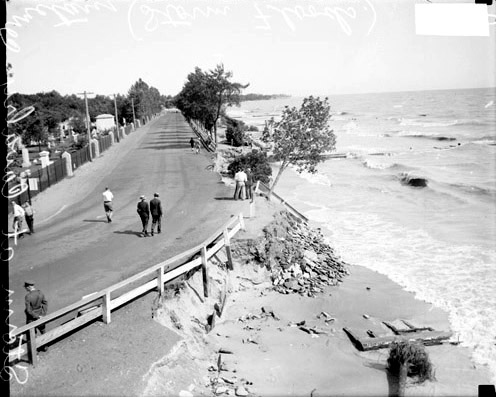Calvary Cemetery was established in 1860 to replace Chicago's Catholic Cemetery, which bordered the south end of the City Cemetery.
Because the Catholic land was privately owned, there are few public records that detail the transformation of the old burial grounds. The City Cemetery stopped the further sales of lots in May, 1859. Both, the Catholic Cemetery and the City Cemetery, were named in the 1866 ordinance that prohibited further burials within their grounds.
The original reason given for removing the cemeteries from their urban locations, had to do with sanitary concerns. Dr. John H. Rauch had proclaimed in his 1859 paper, that burials on low grounds near the lake shore led to the danger of bacteria from the graves ekeing into the city's water system.
On March 30, 1869, an act to preserve the shore of Lake Michigan for residences, was put forth:
Be it enacted by the People of the State of Illinois, represented in the General Assembly, That hereafter, no cemetery or place for the burial of the dead shall be laid out or established at any place within one mile of the shore of Lake Michigan, in the towns of Lake view and Evanston; and no cemetery or place for the burial of the dead, now being within that distance of said lake, in said towns, shall be extended, increased in size or enlarged beyond its present limits, as laid out and dedicated for the purposes aforesaid, so as to bring the said cemetery nearer to the lake than its present location, or within the said mile.
|
 By permission and courtesy of the Chicago History Museum
By permission and courtesy of the Chicago History Museum
This October 29, 1929, Chicago Daily News photograph shows Calvary Cemetery on the Lake Michigan shore, between Chicago and the City of Evanston. The photograph shows flood damage from an autumn rainstorm.
|

